
Changes in Bird Species and Number through the seasons in a spring-fed arroyo in Northern New Mexico.

Graphs, Data and Analysis through October 3, 2014
For background:
Analysis through June 7, 2014 and Analysis through September 6, 2014
The walks in the arroyo continue to surprise! This week it was large numbers of American Robins (118) and Northern Flickers (17).
Here is the data since March for the Robin and the Flicker:

The October data is highlighted in yellow. Clearly something was happening in October that wasn't happening before!
Jump to:
Graphs of Data from March to October
Raw Data from All Months
Why were there so many Robins and Flickers this month?
American Robin: The American Robin is present in this area in all seasons. However, the individuals you see here in the summer may not be the same ones you see in the winter! The Robin's scientific name (Genus, species) is Turdus migratorius.
Here is the range map for Turdus migratorius:

The purple area is their Year-round range. Northern NM is in that area. The red-orange area is additional area into which members of the population spread during the summer for breeding.
Once the breeding season is over, the birds move back into the purple Year-round area as well as into the blue Wintering area. There is a great deal of movement, both North to South, but also up-slope and down-slope.
During both Spring and Fall migrations, Robins form migrant groups, sometimes containing several hundred individuals.1 It is not uncommon to see groups of 50-100 individuals in El Bosque or along the Rio Grande. On a Spring morning along the Rio Santa Fe, near Cieneguilla, I observed multiple flocks, each containing 200-400 individuals. After making what appeared to be "test flights", looping back to the riparian area, each group eventually took off and flew north over the horizon.
I believe such a migrating flock is what we observed on October 3rd.

Northern Flicker: The range map for the Northern Flicker is quite similar to that of the robin. Flickers (Red-shafted) that breed west of the Rocky Mountains migrate south and southwest. There is also migration down-slope from the mountains into lower altitudes. 2
During the breeding season, Flickers are often seen in small groups of 3 or 4 individuals foraging on the ground for ants and other insects. During Fall migration, groups as large as 100 individuals are observed. At this time, their distribution is heavily affected by the availability of fruit and seeds on which they depend in the late Fall and Winter. 2
While Robins are diurnal migrants, flying during the day, Northern Flickers are nocturnal migrants, flying primarily during darkness. This is the case for most migrant songbirds.
Migrating raptors use daytime turbulent thermal activity to power their soaring-gliding flight, rarely flapping their wings in hundreds of miles of flight. But songbirds avoid daytime turbulence. Since they use powered flight for migration, flapping constantly, their energy is better used in the cooler, less turbulent nighttime atmosphere.3
It is likely that what we observed on October 3rd was a migrant group of Northern Flickers, feeding and resting before another night of flying.
Graphs:
The table and graph below show the number of individuals (Purple in table and graph) and the number of species (Green in table and graph):
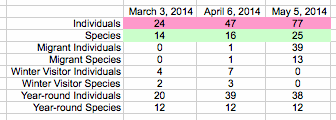
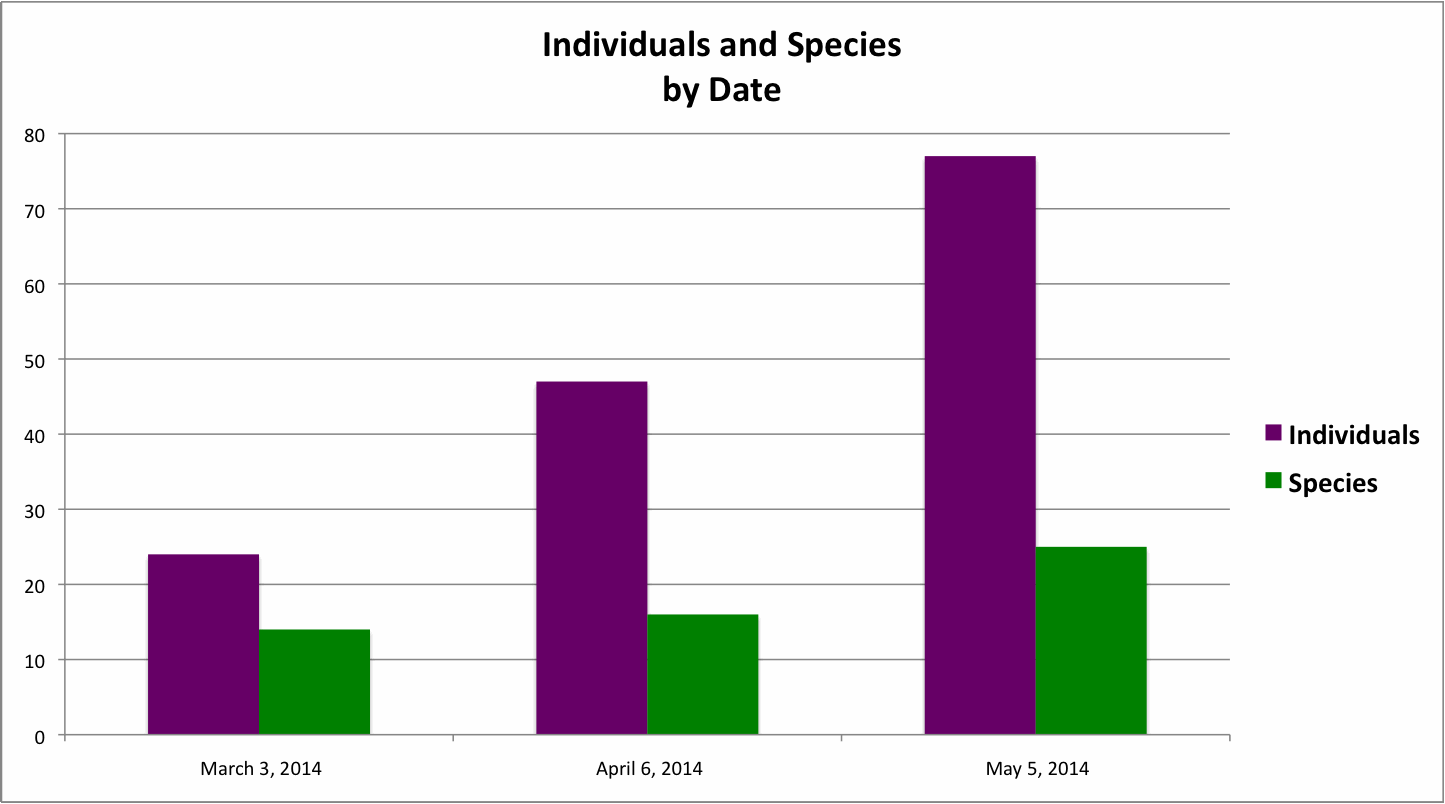
The number of species present for the past 6 months has been roughly constant. The large increase in the number of individuals in September was the result of newly fledged juveniles and a migrating group of 40 Violet-green Swallows.
The large increase in October is due to large groups of migrating Robins (118) and Northern Flickers (17) as well as a migrant group of 16 Turkey Vultures. (Our usual summer visitor vultures had already departed.)
This graph breaks down the species into Year-round (blue), Winter Visitors (red) and Migrants (green).
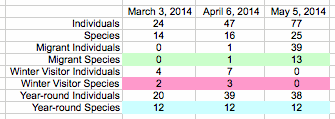
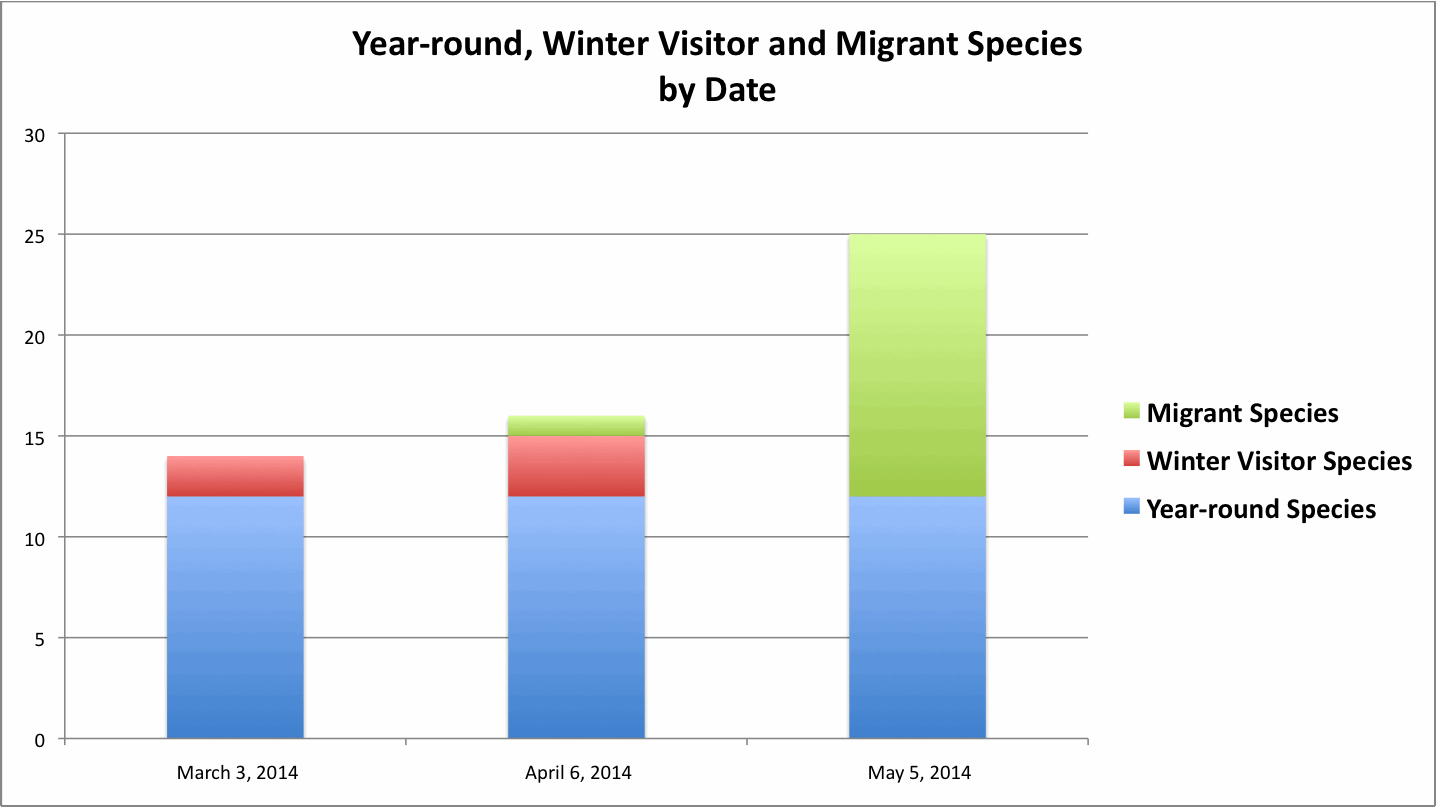
The number of year-round species remains roughly constant over the 6-month period (from 12 to 15). As happened last month, the number of returning winter visitors increased and as expected, almost all of the neo-tropical migrants have departed.
This graph breaks down the counts of individuals by Year-round, Winter Visitors and Migrants.
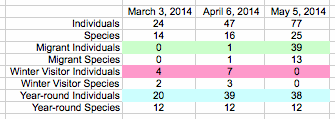
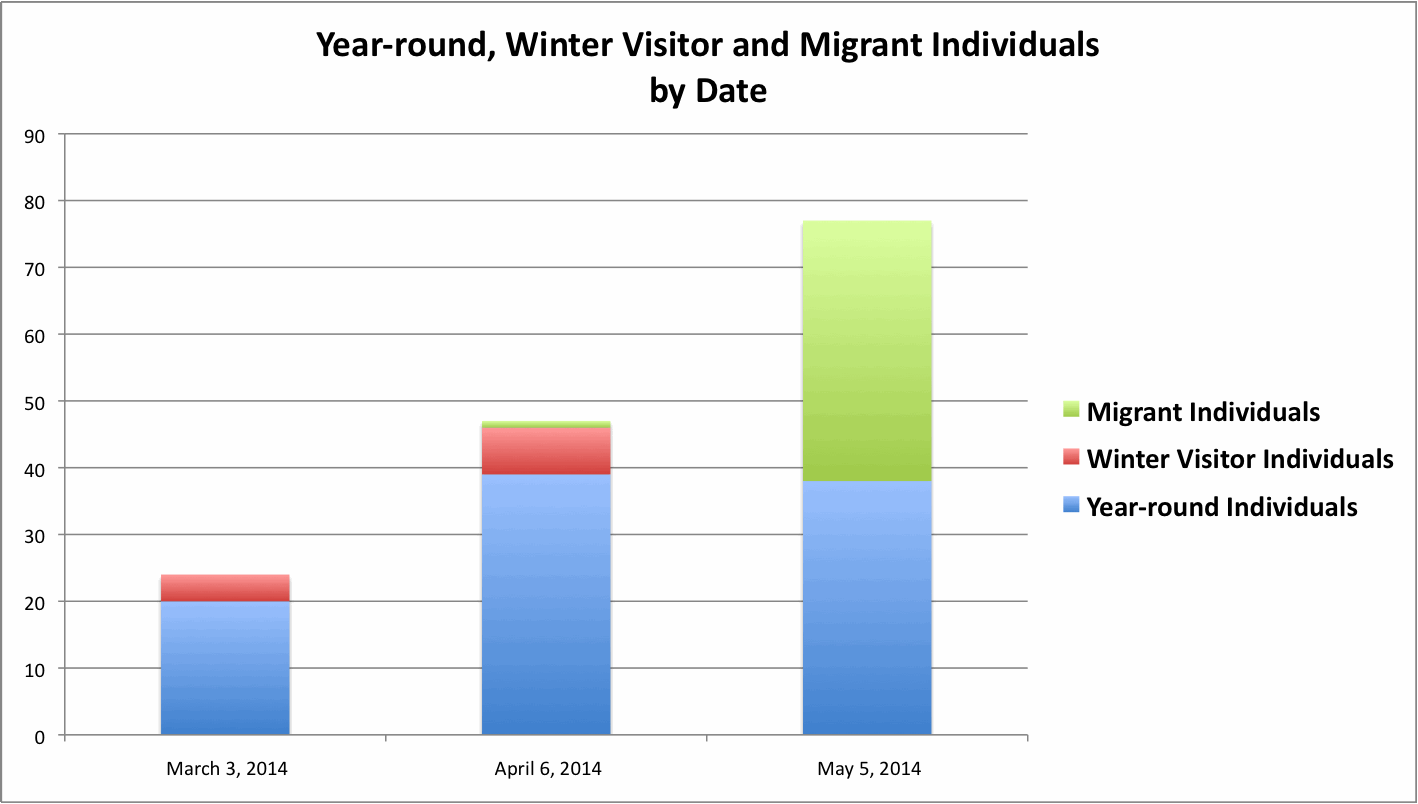
Without the 16 migrating Turkey Vultures (which, in reality had little or nothing to do with the arroyo) the number of migrant individuals would have been 6.
The increase in winter visitors makes sense, while again, the huge increase in the number of year-round individuals was due to the Robin and Flicker migrant groups.
Raw Data:


Notes:
1. Vanderhoff, Natasha, Rex Sallabanks and Frances C. James. 2014. American Robin (Turdus migratorius), The Birds of North America Online (A. Poole, Ed.). Ithaca: Cornell Lab of Ornithology; Retrieved from the Birds of North America Online: http://bna.birds.cornell.edu/bna/species/462
2. Wiebe, Karen L. and William S. Moore. 2008. Northern Flicker (Colaptes auratus), The Birds of North America Online (A. Poole, Ed.). Ithaca: Cornell Lab of Ornithology; Retrieved from the Birds of North America Online: http://bna.birds.cornell.edu/bna/species/166a
3. Kerlinger, Paul., Flight Strategies of Migrating Hawks (Chicago: The University of Chicago Press, 1989)